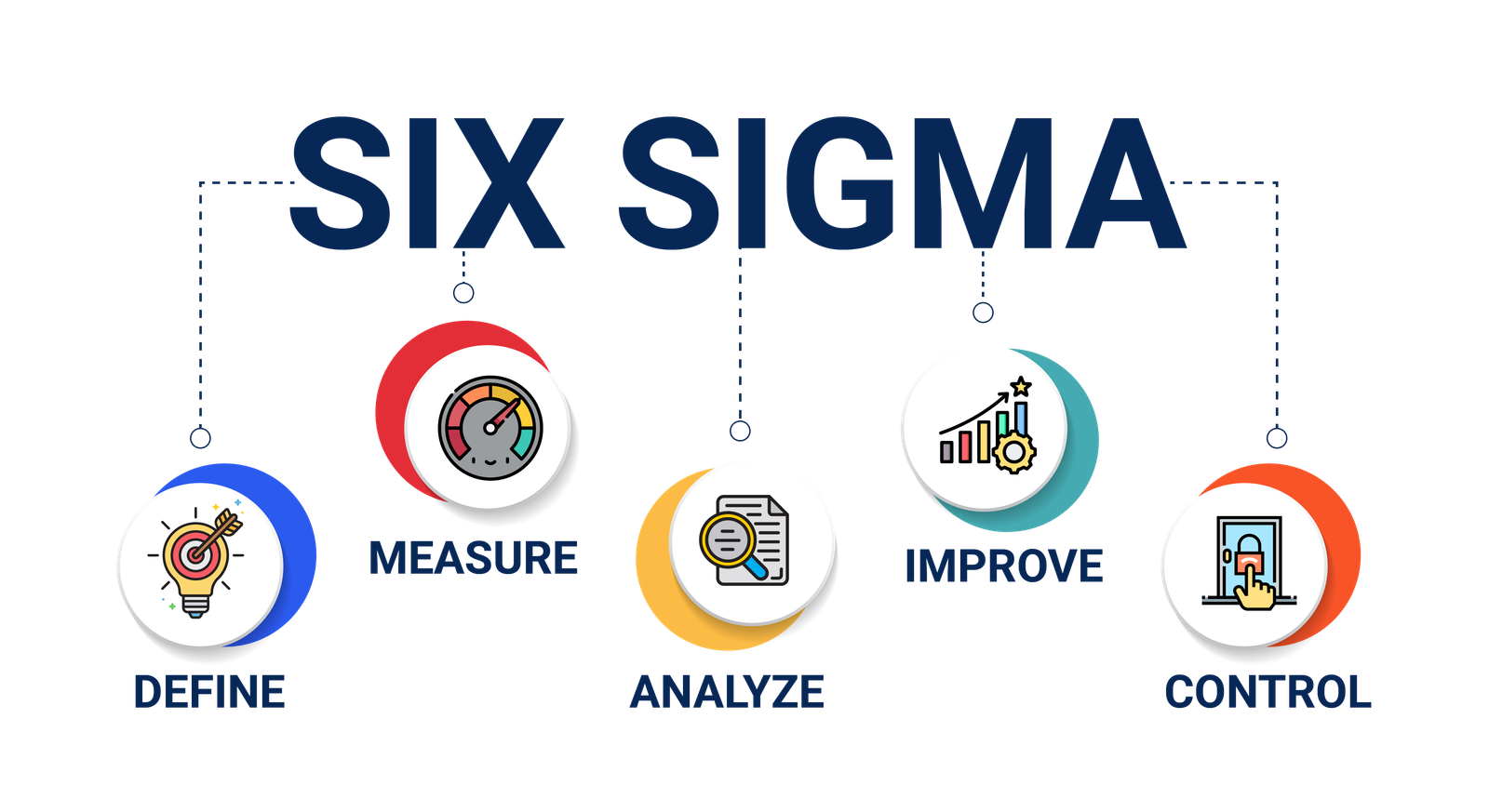
1. Define Phase:
· Identify the problem or opportunity for improvement.
· Define the project goals and objectives.
· Identify key stakeholders and their requirements.
· Define the scope of the project.
· Develop a project plan and timeline.
2. Measure Phase:
· Identify relevant process metrics and data collection methods.
· Collect and analyze data to establish a baseline performance.
· Validate the measurement system to ensure accuracy and reliability.
· Identify and prioritize critical process parameters (CTQs).
· Develop a process map to visualize the current process flow.
3. Analyse Phase:
· Analyze the data to identify patterns, trends, and potential root
causes.
· Conduct root cause analysis using techniques like fishbone diagrams,
Pareto charts, or 5 Whys.
· Use statistical tools and hypothesis testing to validate potential
causes.
· Identify areas of waste, bottlenecks, or inefficiencies in the process.
· Determine the gap between current performance and desired performance.
4. Improve Phase:
· Generate potential solutions and improvement ideas.
· Evaluate and prioritize the solutions based on their potential impact
and feasibility.
· Develop an implementation plan for the selected solutions.
· Pilot-test the solutions and gather feedback.
· Refine and adjust the solutions based on the test results.
5. Control Phase:
· Develop a plan to sustain the improvements and prevent regression.
· Establish control measures and performance targets.
· Implement control systems and procedures to monitor ongoing performance.
· Develop standard operating procedures (SOPs) and work instructions.
· Conduct regular audits and reviews to ensure adherence to the improved
process.
